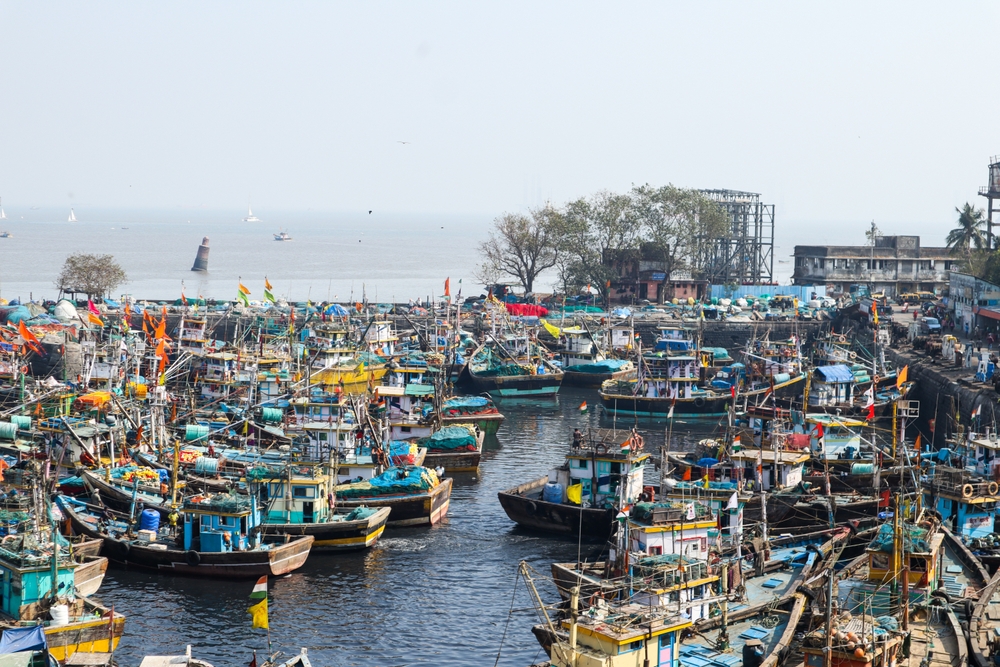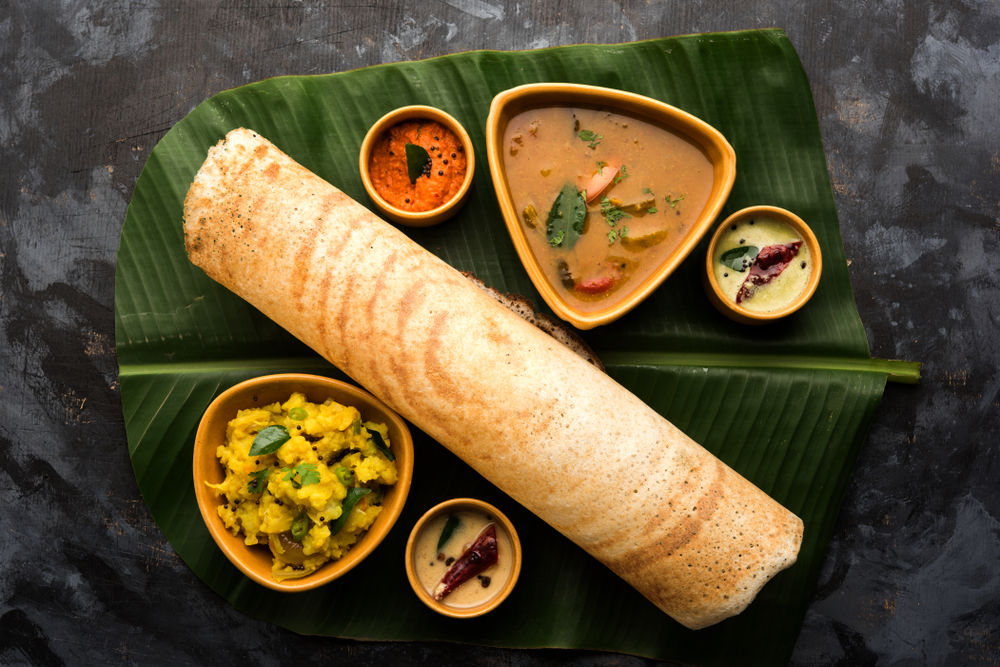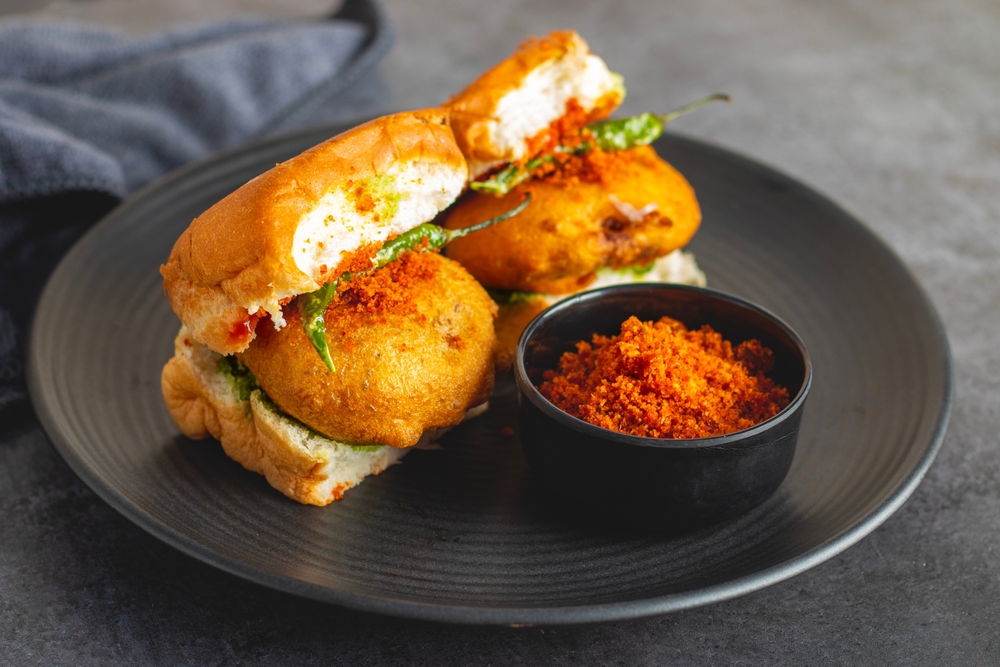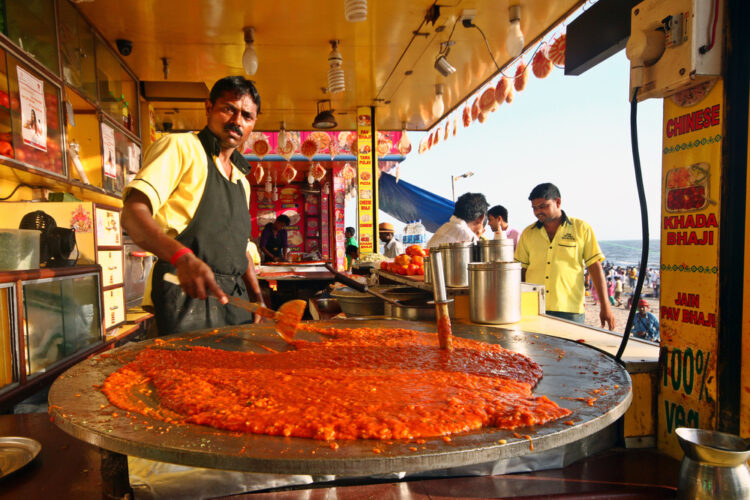As iconic as New York City is to the USA, Mumbai is to India. This Alpha city is India’s financial powerhouse, one of the world’s top ten centers of commerce, and one of the most populous urban regions in the world. It’s the country’s fashion capital, entertainment HQ, and the trigger point of religious tension. It’s also home to one of Asia’s biggest slums, yet has some of the world’s most expensive real estate. Above all, Mumbai is considered to be India’s food capital: here, you’ll sample food that’s only made in Mumbai and nowhere else on earth – not even in India!
What better introduction is there to a city’s culture than through its food.
Up before dawn I tip-toe past the hotel’s night watchman who was soundly asleep sat upright in his plastic chair on the sidewalk. Before delving into Mumbai’s belly, I took in a couple of Cutting Chai’s (strong, milky and very sweet tea brewed with cardamom, ginger and cinnamon served in a shot glass) for the local Chaiwala.
Now suitably caffeinated, I hail a cab to the Sassoon Dock fish market for no reason other than to tick off a must-see from my bucket list. On route, I discovered Mumbai’s traffic lights don’t work at night; some flash yellow, others red; as such, all road users consider this a free-for-all. As if this is not nerve-wracking enough, there is a chap sweeping the road. No, really, there he is, sweeping the middle lane of a boulevard – with a kitchen broom. In fact, I discover there to be a lot if indiscriminate sweeping. Outside one of Mumbai’s main train stations, where the cabbie and I stop for a medicinal Masala Chai, there is an old bloke just sweeping away at the sidewalk, willy-nilly.

Sassoon Dock fish market, now experienced and photographed, I return to my hotel at around 05h30 and again tip-toe past the night watchman, who is still snoring soundly through his shift.
I’m a bit of a foodie and am partial to experiencing new cuisines in exotic locations – which puts Mumbai’s street food, sold by hawkers from portable stalls, right up there. Wherever you find a cluster of people, you’re guaranteed to find a fleet of street food vendors who find business opportunities everywhere – from crowded railway stations and colleges to high-rise office blocks and the city’s favourite night spots. It cuts across barriers of class, religion, gender and ethnicity. Once I settle into the city’s chaotic and noisy vibe I plunge right in and seek advice from the locals, who were eager to share the location of a few gem eatery stalls tucked away into back alley corners – these are the types of street food vendors who are credited by some for developing the city’s food culture.
What a way to taste a city!
Over the next four days I start each morning off with a South Indian dosa – a thin pancake made of fermented rice batter, which has left its mark all over the country, but Mumbai particularly so. Chinese Dosa, Mysore Masala Dosa, Schezwan cheese Dosa (delicious!) and Jini Dosa are just some of the popular ones, which are offered with numerous chutneys. Nandu Dosa on Juhu beach is a well-known dosa stall and is particularly favoured by Bollywood celebrities. Try their Chocolate Dosa.

The lightning quick flicks of a knife blade caught my eye as a vendor chops a lush crop of coriander, ready for his panipuri’s. Arranged on a small tray are sprouted lentils, a pyramid of golden chickpeas and fragrant lime quarters. A customer stands across from the vendor, eating his panipuri’s – popping them whole in his mouth. Panipuri is a common street snack that’s popular everywhere. It consists of a round, hollow puri (unleavened deep-fried Indian bread) fried till crisp and filled with a mixture of flavoured water, tamarind chutney, chili, chaat masala (a spice powder mix), potato, onion and chickpeas. There is nothing more divine than the burst of flavour when you close your mouth around the thin shell of Puri, causing it to explode and have the ingredients do their magic on your taste buds.
Equally as popular is bhelpuri – a crunchy, moreish and surprisingly complicated savoury snack, delicately balanced between sweet, tangy, spicy and sour. It consists of puffed rice mixed with raw tomatoes and onions which are seasoned in a tamarind sauce. It’s particularly good at Juhu and Girguam Chowpatty beach, accompanied by an icy glass of limbu pani, Indian limeade. The proprietor of one such stall, Shankar Singh, a squat amiable fellow with narrow eyes, felt certain I looked under-nourished and fed me an additional bhelpuri, with extra tamarind sauce.
Another great snack is Dahi batata puri – puri shells partially filled with mashed potatoes or chickpeas, followed by a small amount of chilli powder, sweet tamarind chutney and spicy green chutney. Finally, sweetened yoghurt is generously poured over the shell, and the finished product is garnished with a sprinkling of crushed fried noodles, mung beans and finely chopped coriander.
Strolling along Mumbai’s chaotic streets is like walking through gradually unfolding pages of history, passing balconies hanging from colonial homes, glimpsing walls inside traditional dwellings draped with neck-stretching urban art in psychedelic colours.
The most popular street food in Mumbai is Vada Pav: a deep fried potato patty with some coriander and spices. It’s also referred to as a ‘poor man’s burger’ and is available on every street, corner, crossroad and turn. Vada is a mashed potato fritter which is stuffed into the Pav, which is Indian for a bread bun. This mouth-watering meal is served with spicy and sweet chutneys, fried chilies and garlic chutney. There are tens-of-thousands of Vada Pav stalls in Mumbai, some very distinctive in style, like the Anand Vada Pav stall opposite Mithibai College in Vile Parle (West).

Then there’s Pav bhaji, the ultimate in Indian comfort food and arguably the quintessential Mumbai street food. The Bhaji is mashed potatoes and vegetables cooked with tomatoes in a butter-rich spiced sauce until it becomes a soft puree. This is served with a soft Pav which is lightly toasted in a pan with butter. It is presented on a tray with sides of onions, a piece of lemon, tomatoes, a fistful of coriander, and most importantly – a wedge of butter. This is eaten with the hands (remember, always the right hand!) and often extra pav is ordered to soak up the juices. We’re talking about a biblical experience here! If the or bread is yellow, you know you’re in for a treat. To experience the best of the best, visit the Cannon Pav Bhaji (Dr Dadabhai Naoroji Road) which started off as a stall but now has made a proper shop but still feels like a stall.
Mumbai has a cultural rhythm all of its own, one you’ll only experience through its food – a complex taste amalgamation of classic, robust flavors and modern, inventive refinements – patties, puris, kebabs, and lassis – everyone, from billionaire to bum relishes the street food of Mumbai, the city of a million hawkers, the city of dreams. Talking to locals about their food, has them talking about their lives.
The majority of street food tends to be vegetarian, which is not just a religious dietary requirement for most but a practical arrangement too due to the lack of refrigeration and storage facilities in searing temperatures.
There are a few exceptions, of course: one who buys and cooks meat immediately, like Frankie, whose flour wraps are filled with mutton, eggs, mashed potatoes, chicken, and just about anything else you can imagine. The main ingredients, inspired by Lebanese-style pita wraps – are often complemented by raw onion and spicy sauces. Although there are many Frankie stalls around Mumbai, the best one is on Andheri Kurla Road, Andheri East.
Experience the city with all your senses! Soak up Mumbai’s colors, sounds, sights, aromas, and tastes.
Another prevalent dish in Mumbai is Kheema Pav. It is Pav with a dish of minced meat which, like everything else, is cooked in spices, and is served with many sides like lemons, onions, and pickles. Although not really a roadside stall Olympia Coffee House (next to the Police Station in Colaba), has the best Kheema Pav you will find in the city.
Originating in the Middle East, kebabs are one delicacy that has solidified its culinary hold over Mumbai’s non-vegetarians. It essentially consists of chunks of fish or meat that are marinated and grilled on a skewer over a makeshift barbeque pit. A popular street stall-turned-shop in this case is Bademiya (off Horniman Circle, Kala Ghoda) who has a full house every night.
Mumbai-style sandwiches are another staple street-side stomach filler. Slices of bread are liberally pasted with butter and Mumbai’s ever-present green chutney. It is loaded with slices of cucumber, beetroot and onion, then toasted over hot coals. There are limitless variations to the Mumbai sandwich: butter, mayonnaise, cheese, Schezwan, egg, vegetable. Baba’s Sandwich stall near Mithibai College is the ultimate sandwich man and has a constant crowd of students queuing for his sandwiches.
After these spicy sensations, I indulge my taste buds to a few super-sweet treats. Starting with Jalebi – a fried pastry drizzled in syrup. Then there’s Rasgulla – cheese dumpling cooked in syrup, followed by Ras malai, a sweet cream, eaten after a meal. I continue my sweet quest through the crowded streets onto J. Jalebi (opposite Roxy on Tata Road) for amazing desserts. The round orange balls, called motichoor ka laddoo, are delicious. They resemble pretzels and taste like deep fried donuts dipped in cold, sugary water – you’ve never had anything like this before. It’s worth seeking out the stall of Mukesh Sharman, found at the start of Colaba Market on Lala Nigam Road. I sampled several scoops of his Kulfi – a creamy and dense kind of ice-cream dessert made of sweet condensed milk which is then frozen. Ask after Kaju-Anjeer kulfi made with cashew nuts and figs. Simply glorious. I could feast on this three times a day!
Apart from snacks, Mumbai has several juice and milkshake bars on the roadside that offer a variety of juices and milkshakes. Try a Masala milk or watch fresh sugar cane juice (gnaes) being crushed at a stall – absolutely delicious! Then there’s falooda, a sweet flavoured milk, with vermicelli, tapioca pearls and chunks of gelatine. Traditionally it’s made with rose-flavoured milk and enhanced with rose syrup. These days, one would even find a scoop of ice cream in the glass – a chilled glass of heaven! Badshah’s (opposite Crawford Market) is ultra-famous for serving the best Faloodas in Mumbai.
The symbolic end of meal intake is Paan, a betel leaf preparation eaten as a (delectably sweet) mouth fresher.
Okay, so Mumbai’s street food is not exactly hygienic. In my few days there I never once saw a street vendor wash his hands before serving a customer. They handle cash and exchange bank notes with multiple customers, cook and serve food and rarely, if ever, wear gloves. They hurry about their business, pushing pots, pans and buckets, all at the same time. I could just image the outcome if a US Health & Safety Inspector were to run a few tests. But hey, no germ could survive those spices and heck, I’m still alive, in fact I returned to England fractionally fatter.
Whilst on a gastronomic quest to understand Indian street food in all its complexities, I learnt a few culinary secret of what goes to making the perfect curry.
Five Mumbai Must See’s
1. At the end of a tiring day of sightseeing, relax with the locals on the beaches of Juhu and Marine Drive Chowpatty beaches, and watch the sunset.
2. Mahalaxmi Dhobi Ghat open air laundry provides an unforgettable glimpse into the inside of the city. Dirty laundry from all over Mumbai is brought here and painstakingly hand washed by the Dhobis (washermen) in the seemingly endless rows of concrete troughs. (Location: Next to Mahalaxmi railway station – walk out of the station and turn left on the bridge). Ask the cab to drop you at the station and follow the swell of people taking a narrow staircase down the adjoining flyover. On your left is a world of white sheets, crispy dry shirts and the harsh smell of detergent.
3. If you are hovering about in the area at about 11am, you may catch a glimpse of the famous ‘dabbawalas’ – the fleet of lunchbox men who deliver food to thousands of office workers in an astonishingly precise system of colour-coded boxes.
4. Chor Bazaar – the thieves market – near Mohammed Ali Road in south Mumbai for antiques, bronze items and vintage items.
5. Crawford Market in the Fort area, south Mumbai (opposite Mumbai Police HQ) for perishables –fruit, vegetables, food, and flowers.
To plan your trip to Mumbai talk to a trusted travel advisor.


